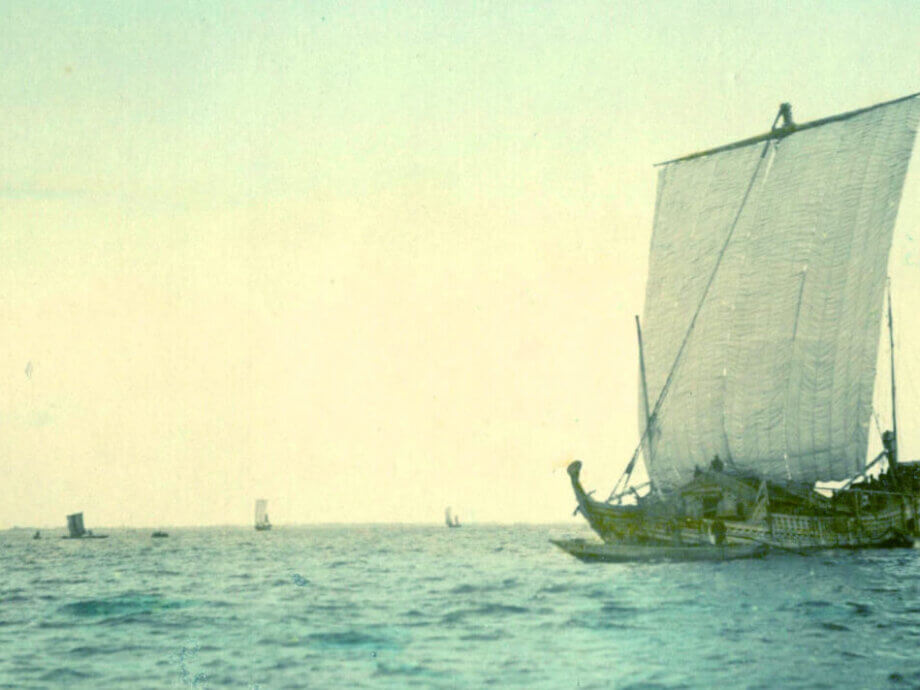The Mystery of Early Human Seafaring in East Asia
For decades, archaeologists and anthropologists have puzzled over one of the most remarkable feats in human prehistory: how did Paleolithic humans, with only stone tools and no maps or metal, manage to cross the treacherous seas between Taiwan and the Ryukyu Islands of Japan some 30,000 years ago? The answer to this question not only sheds light on the migration routes of our species but also reveals the ingenuity and daring of our ancient ancestors.
- The Mystery of Early Human Seafaring in East Asia
- Archaeological Clues: The Ryukyu Islands and Human Migration
- Experimental Archaeology: Recreating the Ancient Voyage
- The 2019 Voyage: Testing the Limits of Human Endurance and Skill
- Simulating the Ancient Seas: The Role of the Kuroshio Current
- Lessons from Failure: Why Rafts Couldn’t Make the Crossing
- Navigation Without Maps: How Did They Find Their Way?
- Could They Return? The One-Way Nature of the Journey
- Broader Implications: Rethinking Paleolithic Ingenuity
- In Summary
Recent experimental archaeology, combining hands-on boat building, open-sea navigation, and advanced computer simulations, has provided compelling evidence that such a journey was not only possible but likely required sophisticated planning, teamwork, and a deep understanding of the ocean. This article explores the groundbreaking research that recreated this ancient voyage, the challenges faced by both ancient and modern crews, and what it tells us about the capabilities of early humans.
Archaeological Clues: The Ryukyu Islands and Human Migration
The Ryukyu Islands, a chain stretching over 1,200 kilometers from Kyushu in southern Japan to Taiwan, have long been recognized as a key region in the story of human migration in East Asia. Archaeological sites on these islands contain human remains, stone tools, shell beads, and even the world’s oldest fishhooks, dating back 35,000 to 27,500 years ago. These finds suggest that Homo sapiens reached the islands during the late Paleolithic period, arriving from both the north (via Kyushu) and the south (via Taiwan).
However, the southern route posed a daunting challenge. The strait between Taiwan and Yonaguni Island, the westernmost of the Ryukyus, is over 100 kilometers wide and is dominated by the Kuroshio Current—one of the world’s strongest ocean currents, flowing at speeds of 1 to 2 meters per second. The islands themselves are low and often invisible from the opposite shore, making navigation by sight nearly impossible for much of the journey.
Despite these obstacles, the archaeological record is clear: people made the crossing. But how?
Experimental Archaeology: Recreating the Ancient Voyage
To answer this question, a team led by Professor Yousuke Kaifu of the University of Tokyo embarked on a series of experimental voyages, aiming to test which types of watercraft and navigational strategies could have enabled Paleolithic humans to cross the Kuroshio. Their approach was inspired by the famous 1947 Kon-Tiki expedition, in which Norwegian explorer Thor Heyerdahl sailed a balsa wood raft across the Pacific to test theories of ancient migration. However, Kaifu’s team had the advantage of decades of archaeological research and modern scientific tools.
The project began in 2013, with initial attempts to cross the strait using reed-bundle and bamboo rafts. These materials, while plausible given the region’s flora, proved too slow and fragile to withstand the powerful current. The rafts either failed to make headway or broke apart in the open sea. This led the team to consider a more robust option: the dugout canoe.
Using replicas of stone axes and adzes modeled after tools found at Paleolithic sites in Japan, the researchers felled a one-meter-thick Japanese cedar tree and painstakingly hollowed it out to create a 7.5-meter-long canoe, which they named Sugime. The construction process itself was a feat of endurance, requiring thousands of blows with stone tools and careful shaping to ensure seaworthiness. The canoe was then polished with fire and stones, echoing techniques seen in later Jōmon period dugouts.
The 2019 Voyage: Testing the Limits of Human Endurance and Skill
In July 2019, the Sugime set out from the east coast of Taiwan, crewed by five experienced paddlers—four men and one woman. Their goal: to reach Yonaguni Island, 225 kilometers away, using only the sun, stars, ocean swells, and their instincts for navigation. For safety, two escort boats accompanied them, but the paddlers relied on period-accurate methods and avoided modern navigational aids.
The journey was grueling. The crew paddled for over 45 hours, often without any sight of their destination. The Kuroshio Current battered the canoe, forcing the paddlers to constantly adjust their heading and bail out water. Fatigue set in, and the crew had to take turns resting while the canoe drifted. At times, clouds obscured the stars, and the only clues to direction came from the movement of the swells and the position of the sun.
Despite these hardships, the Sugime successfully reached Yonaguni Island, proving that such a crossing was possible with Paleolithic technology—provided the crew possessed the necessary skill, stamina, and navigational savvy.
Simulating the Ancient Seas: The Role of the Kuroshio Current
While the successful voyage was a powerful demonstration, the researchers wanted to know whether such a journey would have been possible under the conditions that existed 30,000 years ago. To answer this, they turned to advanced oceanographic modeling. Using a supercomputer, the team simulated hundreds of virtual voyages, taking into account changes in sea level, current speed, and climate during the Paleolithic.
The simulations revealed that the Kuroshio Current was likely 10–20% faster during the last glacial period, making the crossing even more challenging. However, the models also showed that launching from northern Taiwan and paddling at a slight angle against the current—rather than directly toward the destination—increased the chances of success. This strategy would have required a sophisticated understanding of ocean dynamics and careful planning.
Yu-Lin Chang, a physical oceanographer and co-author of the study, expressed surprise at the results:
“The Kuroshio Current is generally considered dangerous to navigate. I thought if you entered it, you could only drift aimlessly. But the results of our simulations went far beyond what I had imagined. I’m pleased this work helped illuminate how ocean voyages may have occurred 30,000 years ago.”
The findings suggest that Paleolithic seafarers were not simply drifting with the currents but were strategic navigators, capable of reading the signs of the sea and adjusting their course accordingly.
Lessons from Failure: Why Rafts Couldn’t Make the Crossing
One of the most important insights from the project came from the repeated failures of reed and bamboo rafts. While these types of craft may have been used in other regions, they proved inadequate for the Kuroshio crossing. The current was simply too strong, and the rafts too slow and fragile. Only a dugout canoe, with its greater speed and durability, could make the journey.
This finding has broader implications for our understanding of early maritime technology. While direct archaeological evidence of Paleolithic watercraft is lacking—wooden boats rarely survive for millennia—the presence of edge-ground stone axes in both Japan and Australia suggests that the technology for making dugouts was widespread in the Western Pacific by this time. The experiment also highlights the importance of teamwork and skill: all members of the crew, regardless of gender, needed to be competent paddlers, and effective leadership was crucial for success.
Navigation Without Maps: How Did They Find Their Way?
Perhaps the most remarkable aspect of the voyage was the navigation. With no maps, compasses, or GPS, the crew had to rely on natural cues: the position of the sun and stars, the direction of ocean swells, and even the behavior of birds. From the coast of Taiwan, Yonaguni Island is not visible; only from the high mountains of northern Taiwan does it appear above the horizon. This suggests that ancient mariners may have scouted their destination from elevated vantage points before setting out.
To test whether accidental drift could explain the migration, the team released 138 satellite-tracked buoys from Taiwan. Only four came within 20 kilometers of the Ryukyu Islands, and those were driven by storms. The Kuroshio, it turns out, tends to carry drifters away from the islands, not toward them. This supports the idea that the crossing was intentional and required deliberate navigation.
Professor Kaifu reflected on the courage and skill of these early explorers:
“Those male and female pioneers must have all been experienced paddlers with effective strategies and a strong will to explore the unknown.”
Could They Return? The One-Way Nature of the Journey
While the experiment proved that a crossing from Taiwan to Yonaguni was possible, the researchers believe that a return journey would have been far more difficult, if not impossible, for Paleolithic people. Without maps or knowledge of the Kuroshio’s flow patterns, planning a return trip would have been beyond the capabilities of early navigators. This suggests that the migration was likely a one-way journey, with settlers leaving their homeland behind for good.
This echoes the experience of other ancient seafaring cultures, such as the Polynesians, who navigated vast distances across the Pacific using only environmental cues. The Ryukyu crossing stands as one of the earliest and most challenging examples of such maritime migration.
Broader Implications: Rethinking Paleolithic Ingenuity
The success of the Sugime voyage and the supporting simulations have profound implications for our understanding of early human history. They challenge the stereotype of Paleolithic people as “primitive” and highlight their capacity for innovation, strategic thinking, and risk-taking. The ability to build seaworthy boats, plan complex journeys, and navigate open water was a key factor in the global dispersal of Homo sapiens.
Peter Bellwood, an archaeologist at the Australian National University, commented on the significance of the research:
“Such a crossing between islands would have been one of the oldest, and among the longest, in the history of Homo sapiens up to that period, exceeded only by the migration to Australia from eastern Indonesia some 50,000 years ago.”
The experiment also demonstrates the value of experimental archaeology—using hands-on reconstruction and real-world testing to answer questions that cannot be resolved by artifacts alone. As Professor Kaifu noted, the sea washes away most physical evidence, but by recreating the journey, researchers can gain new insights into the challenges and achievements of our ancestors.
In Summary
- Archaeological evidence shows that humans reached Japan’s Ryukyu Islands from Taiwan around 30,000 years ago, despite the formidable Kuroshio Current.
- Experimental archaeology demonstrated that a dugout canoe, built with Paleolithic tools, could make the 225-kilometer crossing if crewed by skilled paddlers using natural navigation methods.
- Advanced computer simulations confirmed that such a journey was possible even when the Kuroshio was stronger than today, provided the crew launched from northern Taiwan and paddled strategically against the current.
- Attempts with reed and bamboo rafts failed, highlighting the importance of technological innovation in early seafaring.
- The migration was likely a one-way journey, requiring courage, teamwork, and a willingness to face the unknown.
- This research challenges assumptions about Paleolithic “primitiveness” and underscores the ingenuity and adaptability of early humans.












